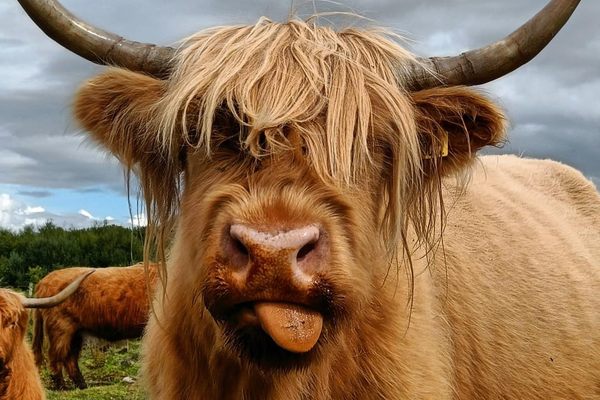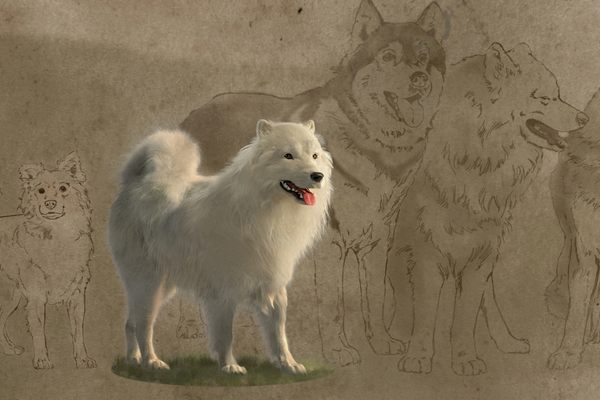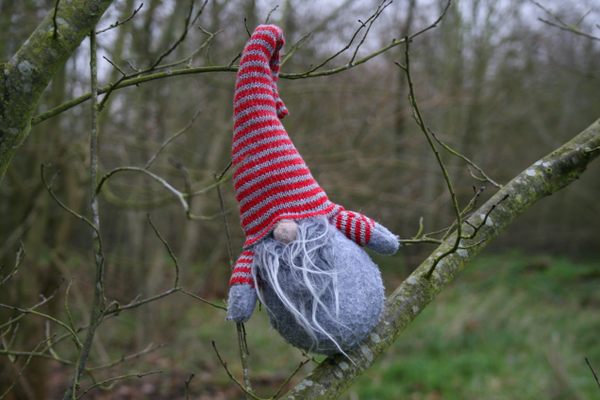The Story of the Aurochs Is More Complicated Than We Thought
New research helps us understand how cattle spread across the world.
“Cattle are one of the most important animals in human history,” says Mikkel Sinding, a postdoctoral researcher in the biology department at the University of Copenhagen. Yet for all the value cows have held for human beings past and present, Sinding says, “we still don’t actually fully know where they came from.” All we know for certain is that cattle came from aurochs, their larger, fiercer, extinct wild ancestor. In a new study of ancient aurochs genomes published in Nature, Sinding and other researchers have shed light on the deep global ties that bind aurochs and domestic cattle with humankind.
Sporting distinctive curved horns, the largest aurochs bulls stood about six feet tall at the shoulder and weighed over 2,200 pounds. Ancient historical accounts describe the animals as dangerous due to their aggression, speed, and strength, as well as their lack of fear. Like their bison cousins, aurochs stood their ground to defend against threats rather than fleeing, making them risky to approach.

Aurochs were not only massive, but massively successful as a species. They once ranged across Europe, Asia, and North Africa, from Spain and Morocco to India and Korea. Scientists still debate where the aurochs originated, but the recent study of aurochs genomes aimed to trace some of the movement behind their vast distribution. Researchers analyzed 38 genomes from prehistoric aurochs remains dated to both before and after the LGM or “Last Glacial Maximum” about 20,000 years ago, during Earth’s last Ice Age. Their findings reveal what Sinding calls “a super complex story where we have several layers of wild cattle across time in Europe,” as aurochs populations shifted with changes in their environment and, later, interactions with human beings.
“We know that there were aurochs-like things in Europe already 600,000 years ago,” says Sinding, referencing the earliest appearance of the animals there. The early hominid Homo heidelbergensis arrived in Europe around the same time. They may have gradually followed aurochs from North Africa into new territory because the wild cows were a source of food, or perhaps because the environment was then favorable to both species. “Overall, we like to live in the same places as aurochs,” says Sinding, including a similar ideal temperature range.
During the LGM, with ice sheets advancing across 25 percent of Earth’s land area, genetic diversity in European aurochs decreased dramatically. This suggests that the animals experienced a “bottleneck,” a significant loss of population with only a few survivors to pass on their genes. “They probably lose habitat because it turns into tundra,” Sinding explains. More recent European aurochs genomes show ancestry from several populations of Asian aurochs. This suggests that as environmental conditions for aurochs improved again with gradually warming temperatures, aurochs moved into Europe from other regions and interbred with the few European aurochs that survived the Ice Age bottleneck. “It’s not a complete extinction,” says Sinding, “but it’s a loss of habitat, and then just recolonization.”

About 10,000 years ago, another event occurred that would forever change the genetic history of the aurochs: Human beings domesticated them. According to Benjamin Arbuckle, an archaeologist and anthropology professor at the University of North Carolina at Chapel Hill, numerous remains of aurochs can be found in early Neolithic farming communities from the Fertile Crescent region of Southwest Asia. But from around 8000 BC, “these remains get smaller and smaller,” says Arbuckle, who was not affiliated with the recent aurochs study. The changing size, as well as other changing features like horn shape, suggests that humans were selectively breeding captive animals rather than hunting them from the wild. The remains also start to be from animals killed at the same age, reminiscent of modern livestock management. Aurochs were domesticated at roughly the same time in South Asia as well, leading to two major lineages in today’s cattle, but “to what extent it’s a separate event is a little bit complicated,” says Arbuckle. There’s less clear archaeological evidence for this other domestication, and, he adds, “people are talking to each other in the prehistoric world, big time. So they’re not completely independent.”
According to Arbuckle, it’s likely that cattle domestication had “a really multi-purpose beginning,” with the animals’ various values to human communities being recognized early on. “They’re powerful, they’re labor, they’re milk producers,” says Arbuckle. “And they’re visually stunning and symbolically important, with their big horns and their big bodies and their interesting colored skins.” Cattle became so important that human beings brought them wherever they went, trading and crossbreeding different populations. Domestic cattle had reached southern Europe by 6000 BC, and were widespread across the continent a thousand years later. And the recent analysis of aurochs DNA shows that early cattle herders also bred their stock with wild aurochs wherever they encountered them.

“Once the cattle moves in, people just incorporate aurochs into the herds somehow,” says Sinding, so that “European cattle have a pinch of European aurochs” in their DNA. “It’s a really interesting and weird scenario to imagine,” adds Arbuckle. “Are they capturing aurochs calves and bringing them into their pens? Are there cows running away to be with the wild aurochs?” Arbuckle explains that this genomic evidence from the recent study tells “a different part of the story of domestication which we don’t usually talk about.” Domestication wasn’t as simple as a one-time taming of the fierce wild aurochs. Interactions between humans, cattle, and aurochs were continuous and complex.
Arbuckle describes the first agriculturalist cattle-herders migrating into Europe as encountering communities of hunter-gatherers who still depended on the wild aurochs for food. “Imagine herding cattle in Poland in 5000 BC when there’s wild cattle living in the forest,” says Arbuckle. “No one has experienced that for a thousand years.” Modern cows are directly descended from the first domesticated aurochs, but they also have a smattering of more recent aurochs ancestry, from the local aurochs population wherever a cow’s ancestors lived.

The wild aurochs survived into the modern era. The last-known individual, a female, died of natural causes in Poland in 1627, making her contemporary with Galileo and the Plymouth colony Pilgrims. Even after the ancestral wild cattle disappeared, they had been so culturally significant for so long that traditional folklore, songs, and idioms preserved references to them. As late as the 19th century, Russians might say that a rowdy drunk person was “acting like an aurochs.” Yet today, the cow has become such an icon of domesticity that the idea of a wild cow is “almost an oxymoron,” says Arbuckle.
In recent years, the aurochs has been described as a likely candidate for “de-extinction” through selective breeding. Understanding the ancient genetic history of cattle could play a role in future research to create a modern cow that is as close to the original wild aurochs as possible. But the complexity of that genetic history raises the question: Did the animals ever really disappear? Today’s domestic cattle “are aurochs, basically,” says Sinding, “but to the same degree as a poodle is a wolf.” He points out that it’s easy to imagine a distinction between wild aurochs and domestic cattle because wild aurochs are extinct, but this separation is somewhat arbitrary, “just a definition that you can debate backwards and forwards.”

The last wild aurochs likely had ancestry from domestic cattle; today’s cattle have ancestry from wild aurochs. “The boundaries are very, very fluid between domestic and wild,” says Arbuckle, much more so than we tend to think of them today. In modern times, we can see the cycle of complex human/cattle relations continuing when domestic cattle escape or are abandoned and become feral, returning to a wild state, and feral cattle are later domesticated. Arbuckle explains that this was what happened with the famous Texas longhorn. Cattle introduced to North America by Spanish colonists in the 1600s went feral in Texas and adapted to their new environment, before being captured and domesticated again. “Three hundred years of just living on their own created a kind of an aurochs,” says Arbuckle. “What’s the difference between an aurochs, and a domestic cattle population that then became wild?” he asks.
Sinding considers this new understanding of the aurochs’ genetic history “a really big part of the story of the wild aurochs, but also the origin of cattle, and how there is a lot of aurochs legacy in cattle.” Arbuckle agrees that the genetic research is “recognizing that the story of this animal doesn’t begin when it starts living with people 10,000 years ago.” Since long before humans and cattle lived together, and during the thousands of years that our two species have intertwined, “these animals have their own complicated histories,” Arbuckle says. “Which is, I think, pretty neat.”





























Follow us on Twitter to get the latest on the world's hidden wonders.
Like us on Facebook to get the latest on the world's hidden wonders.
Follow us on Twitter Like us on Facebook